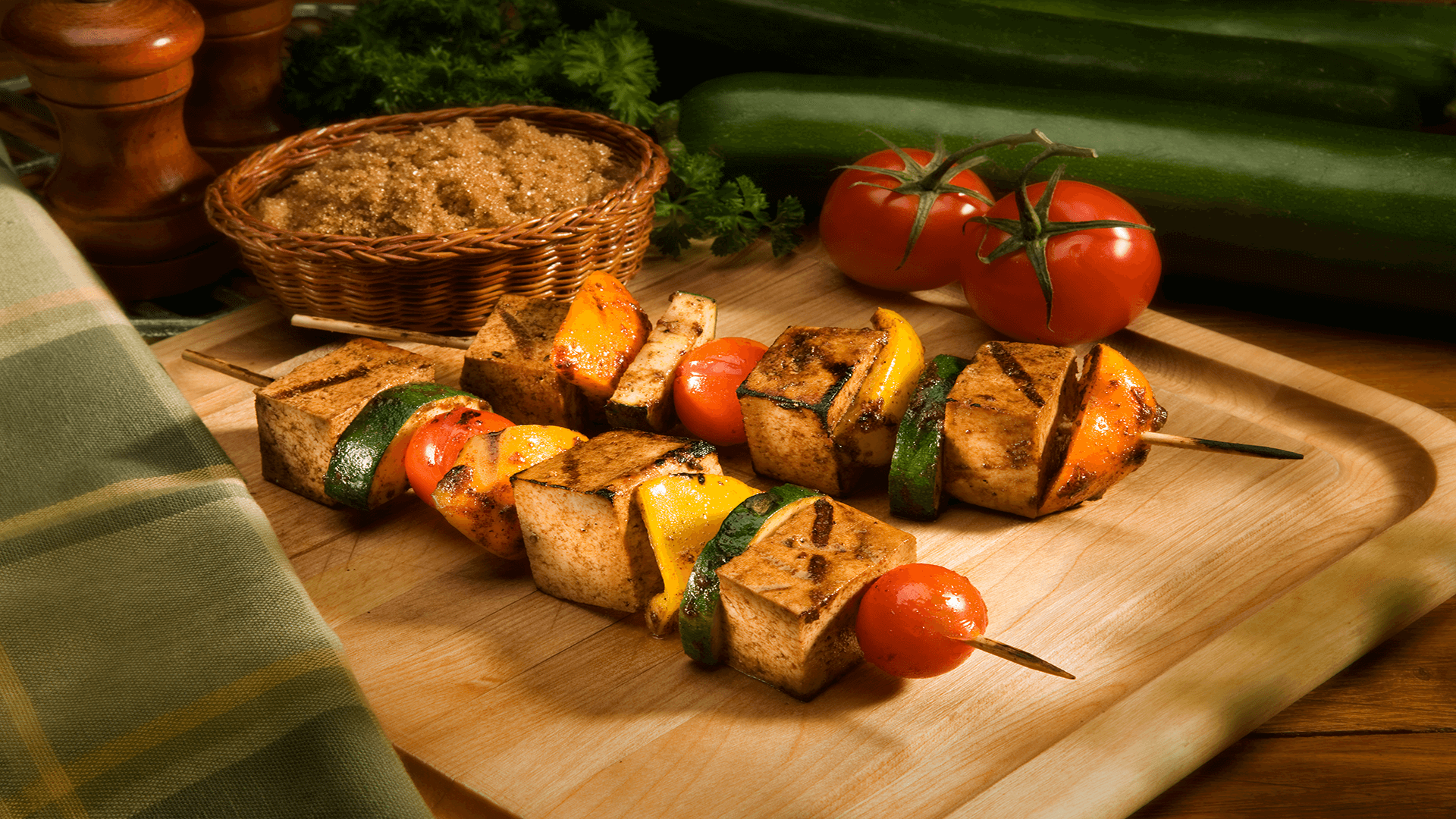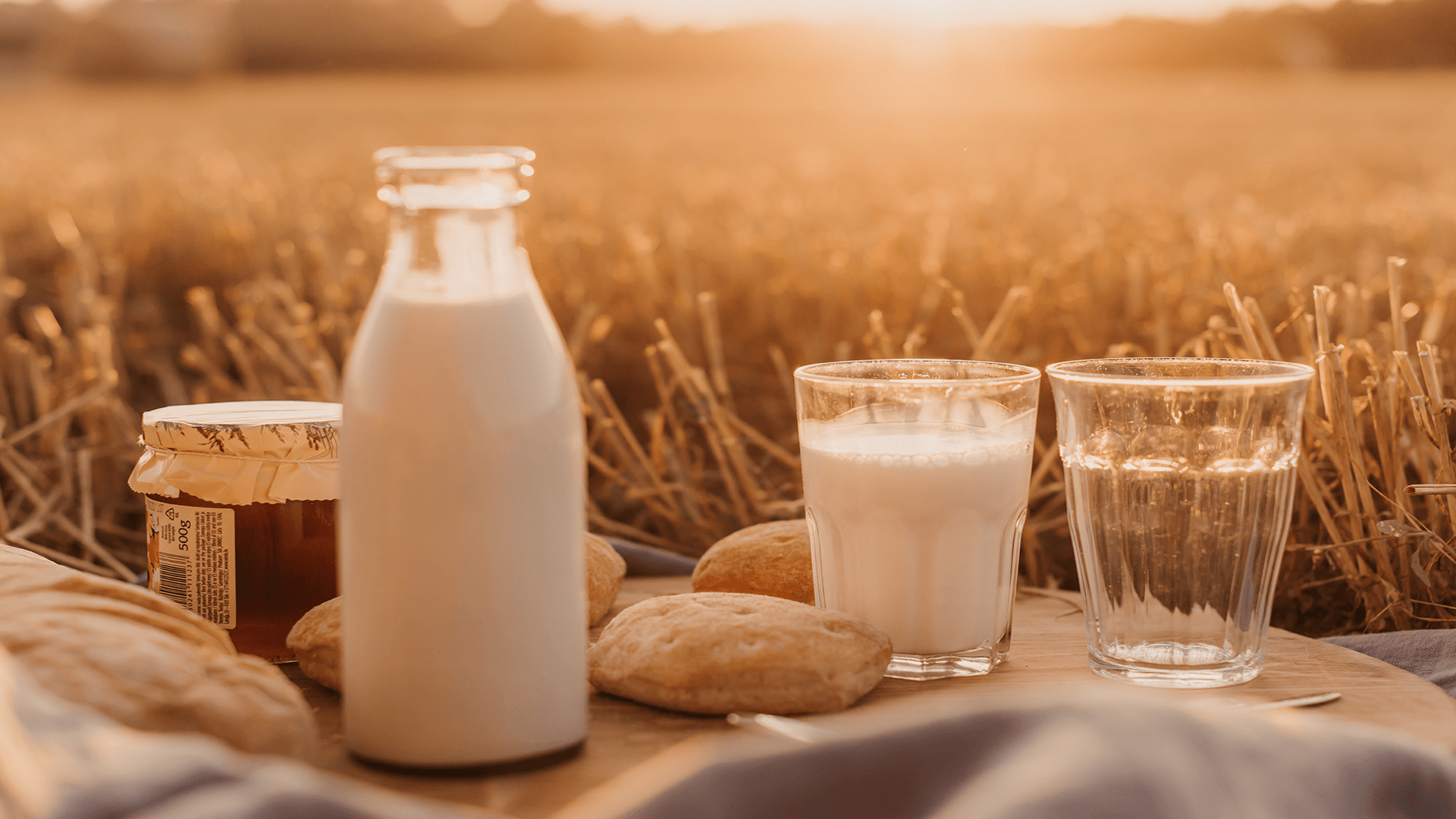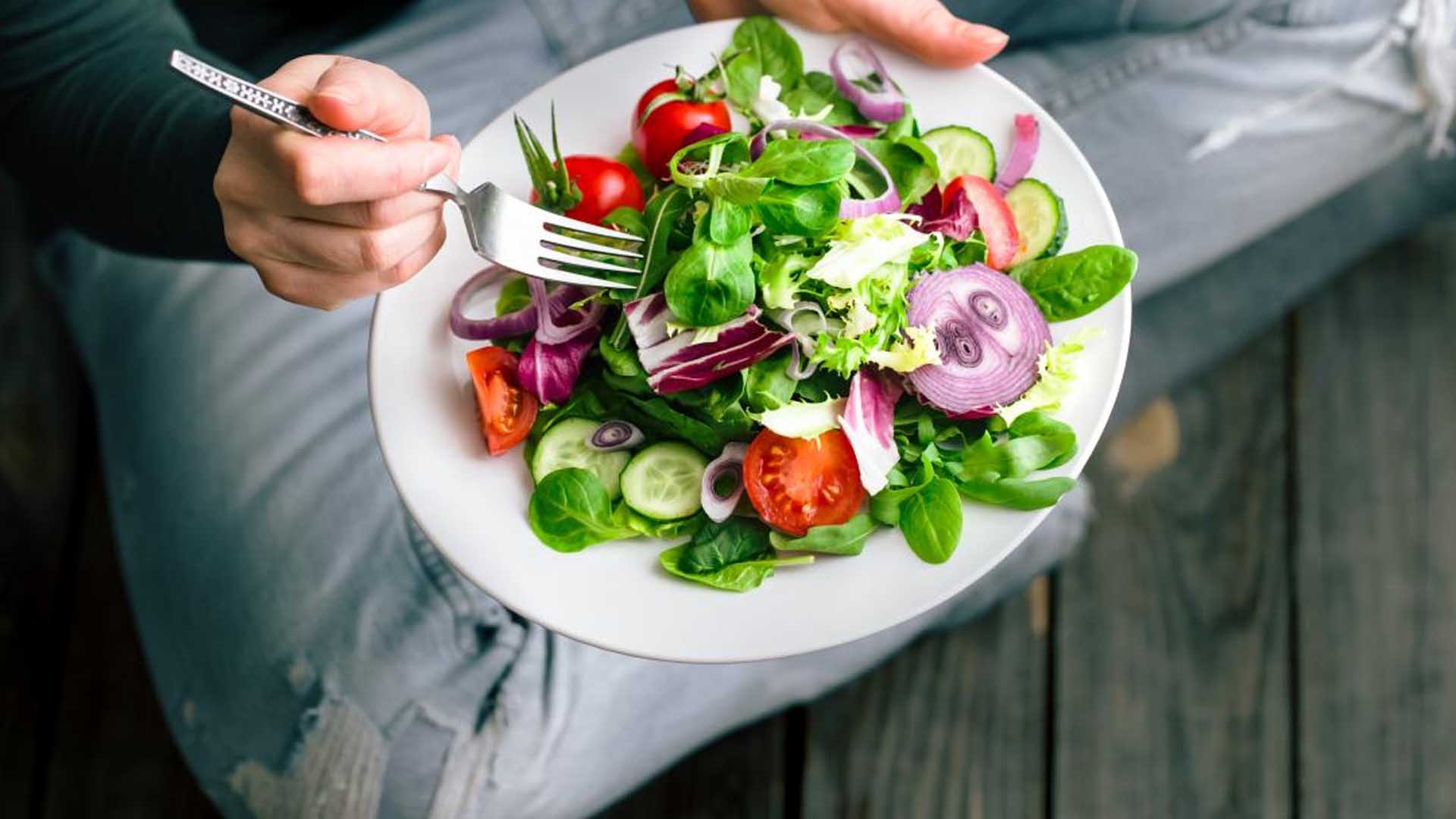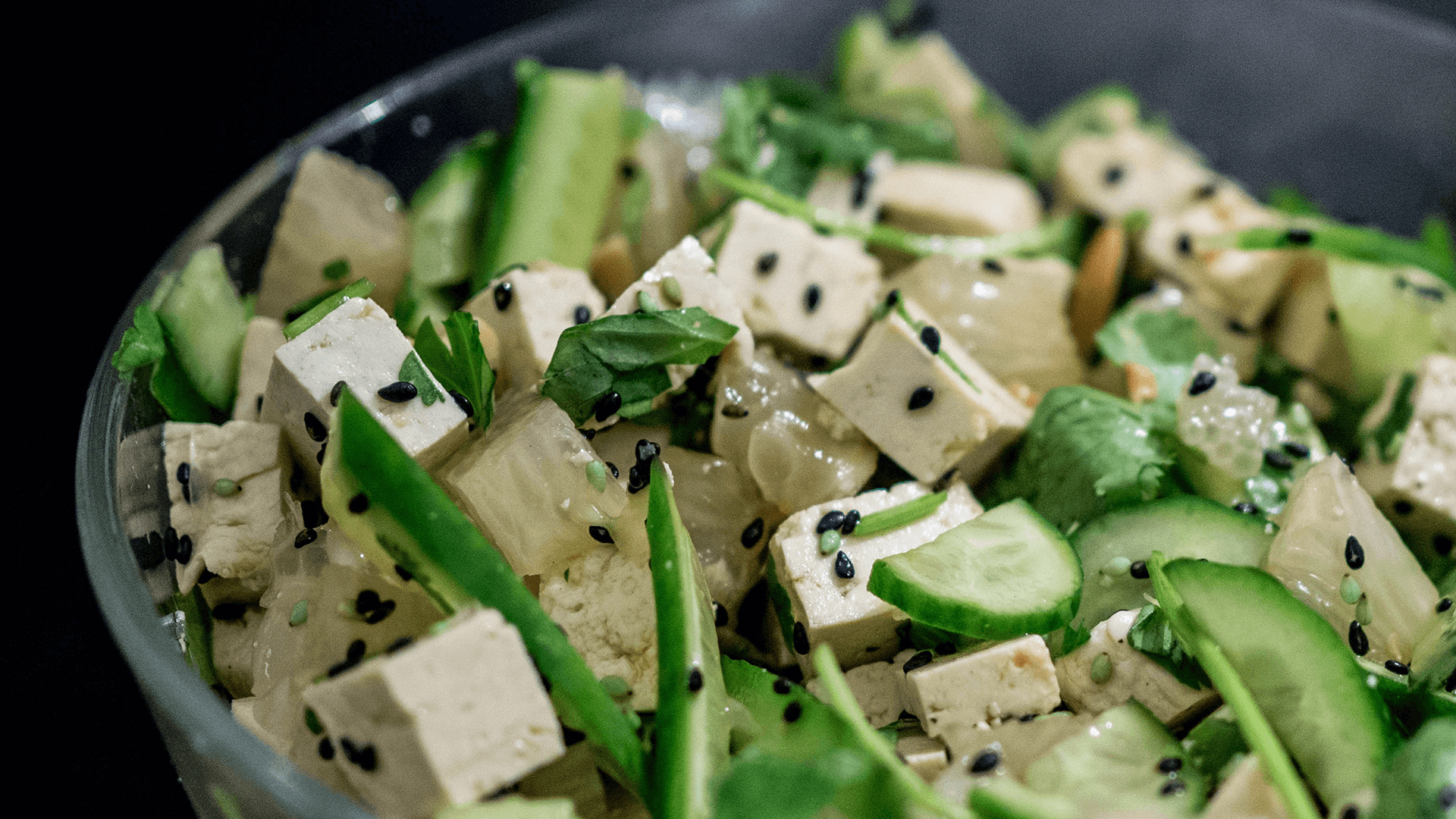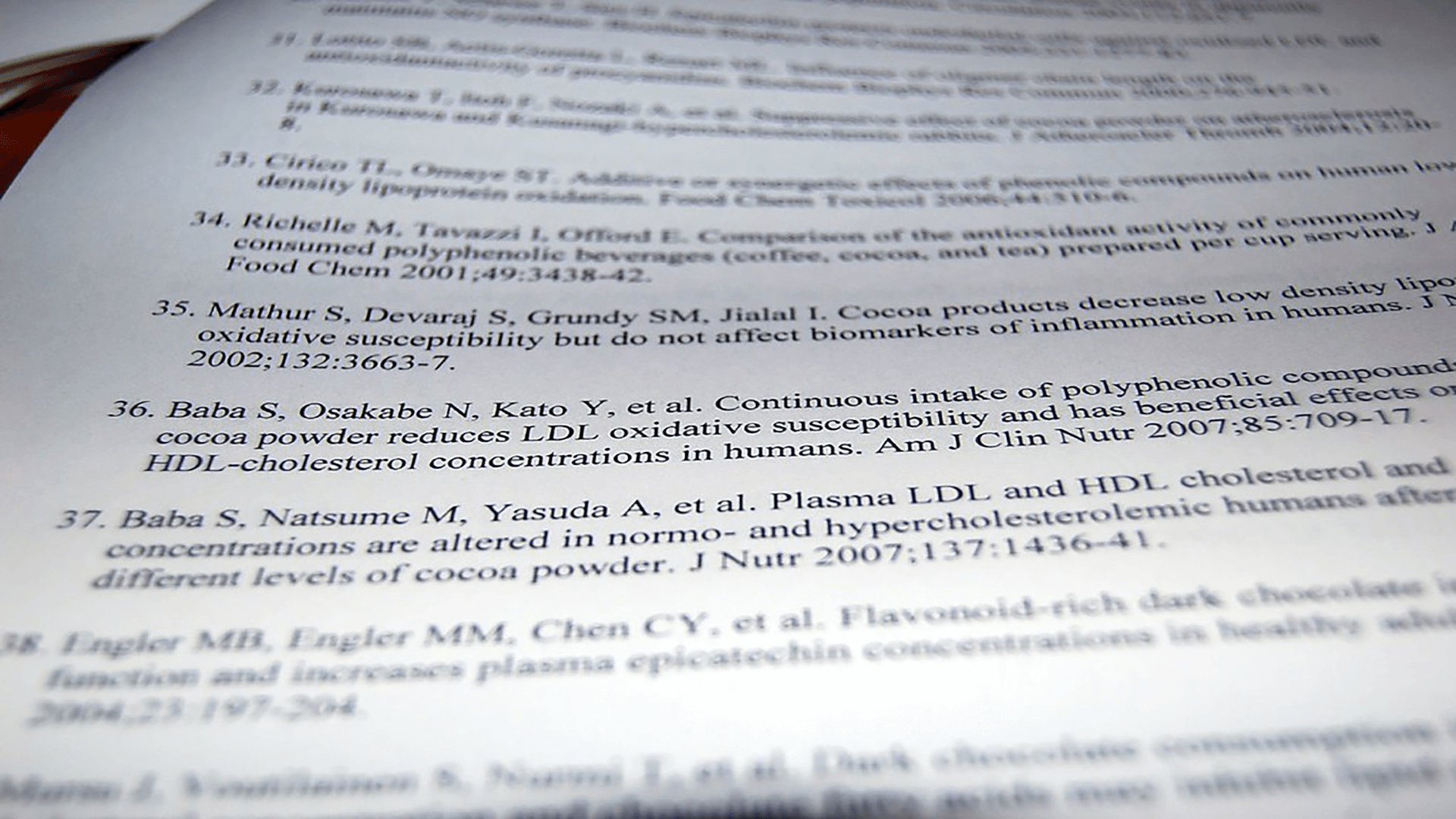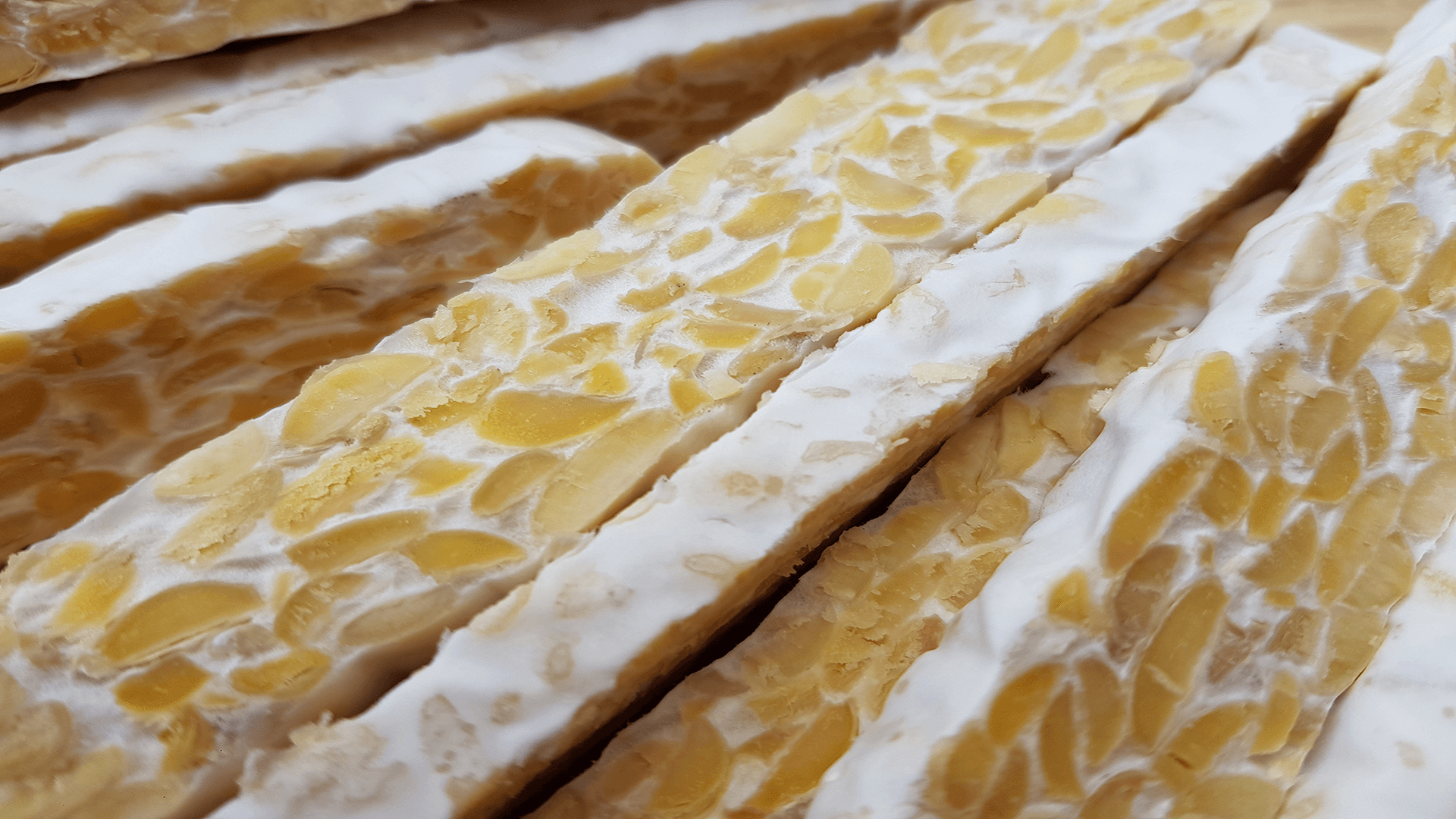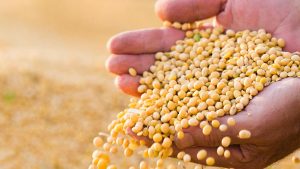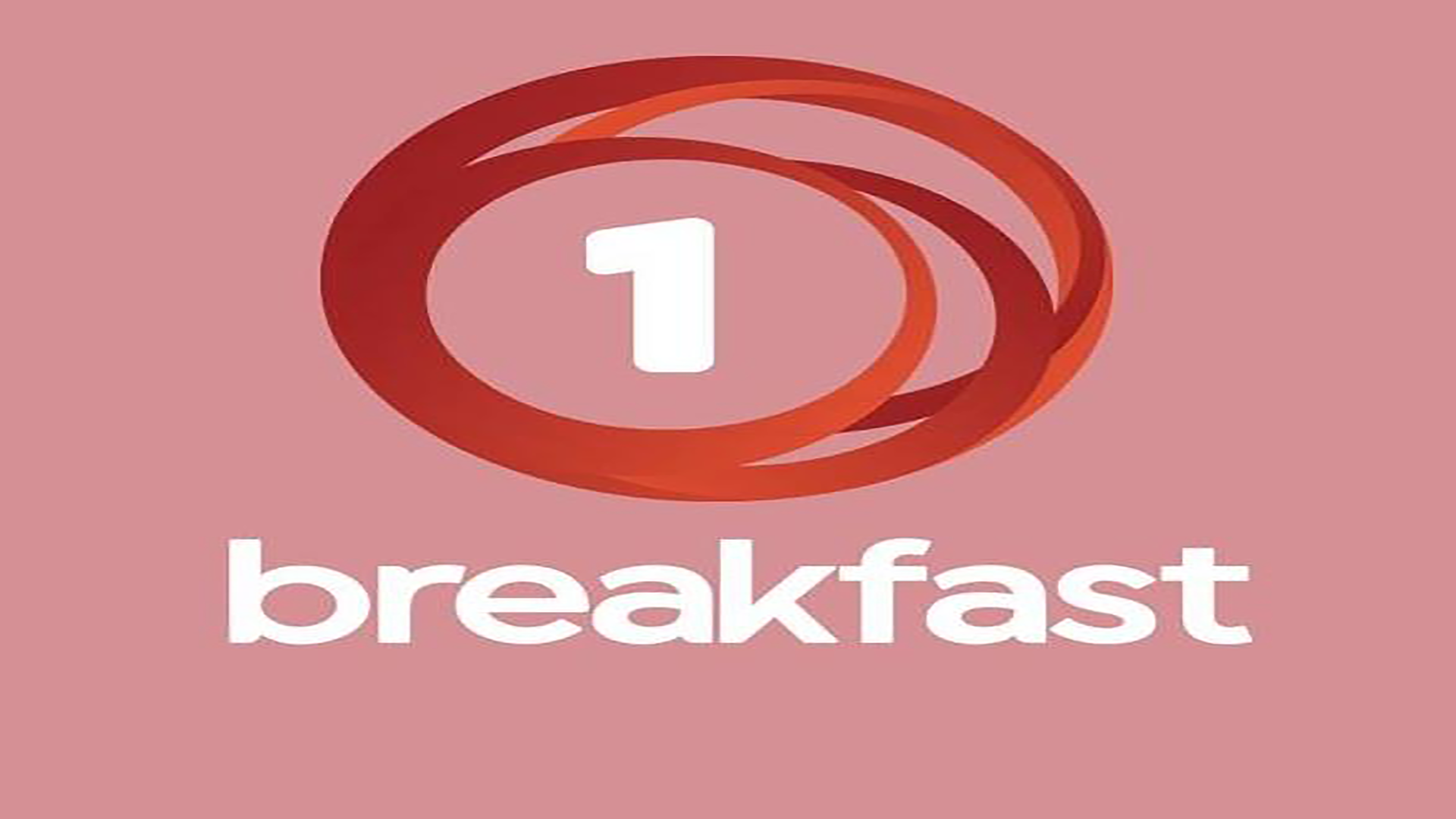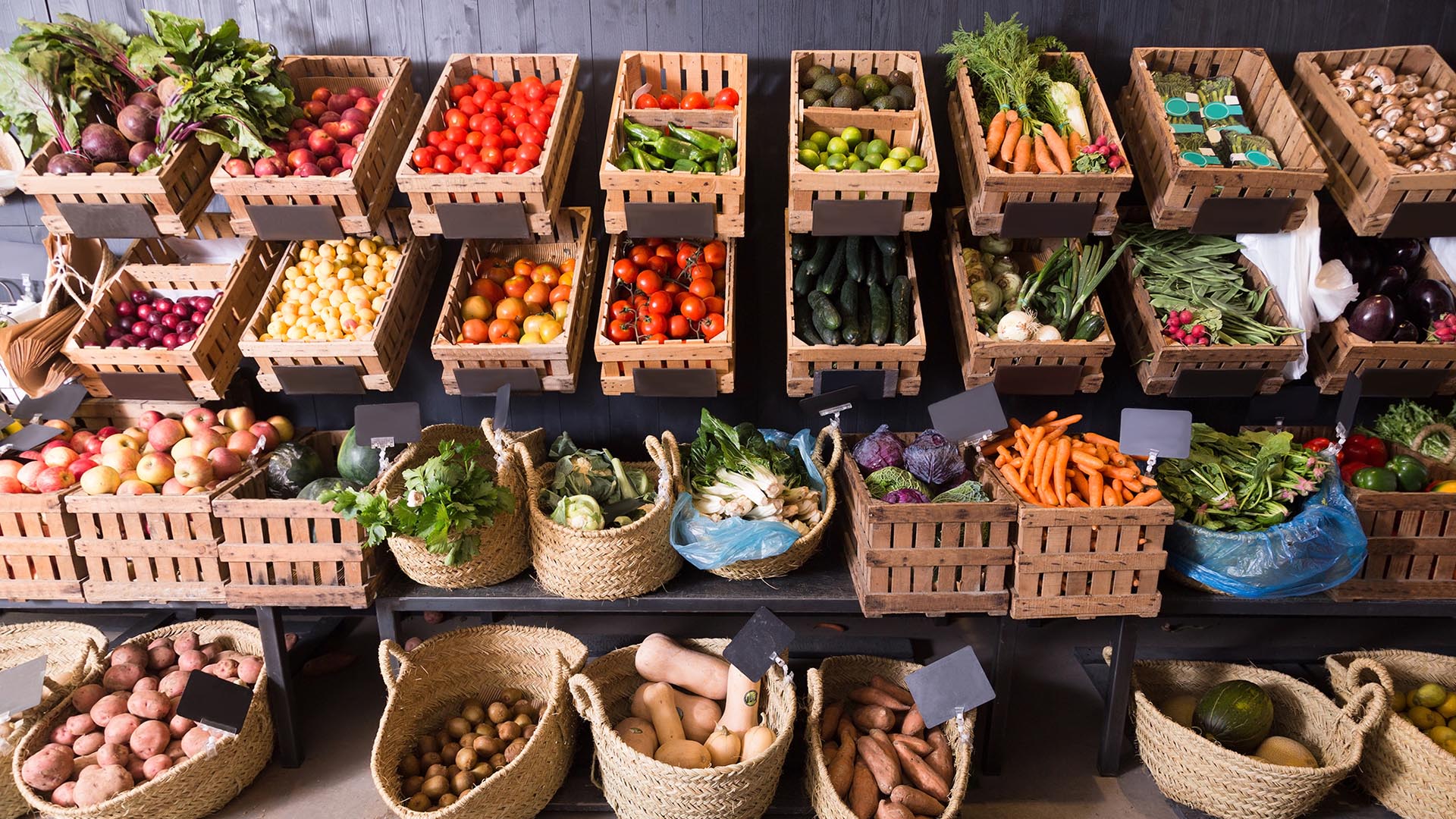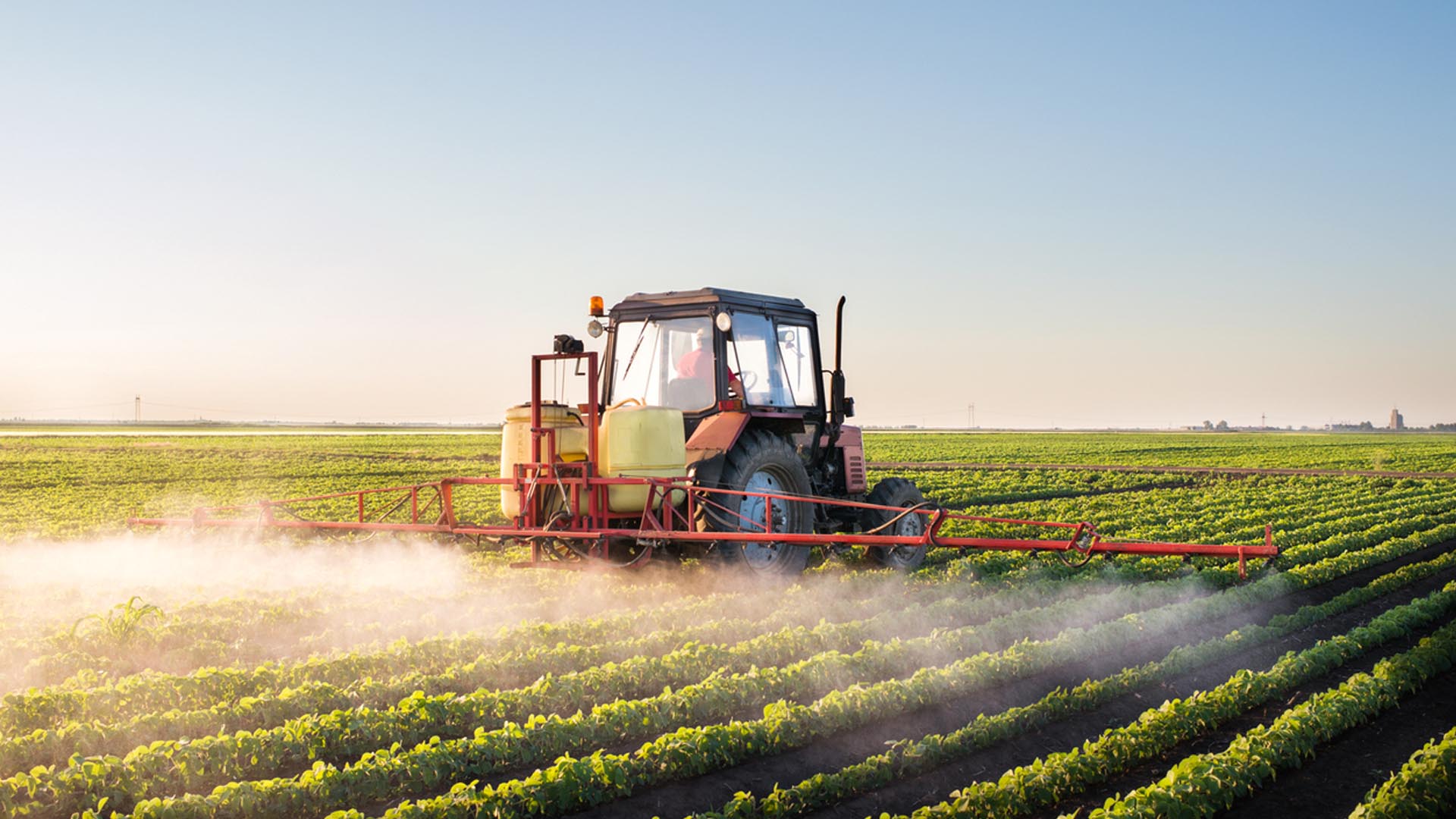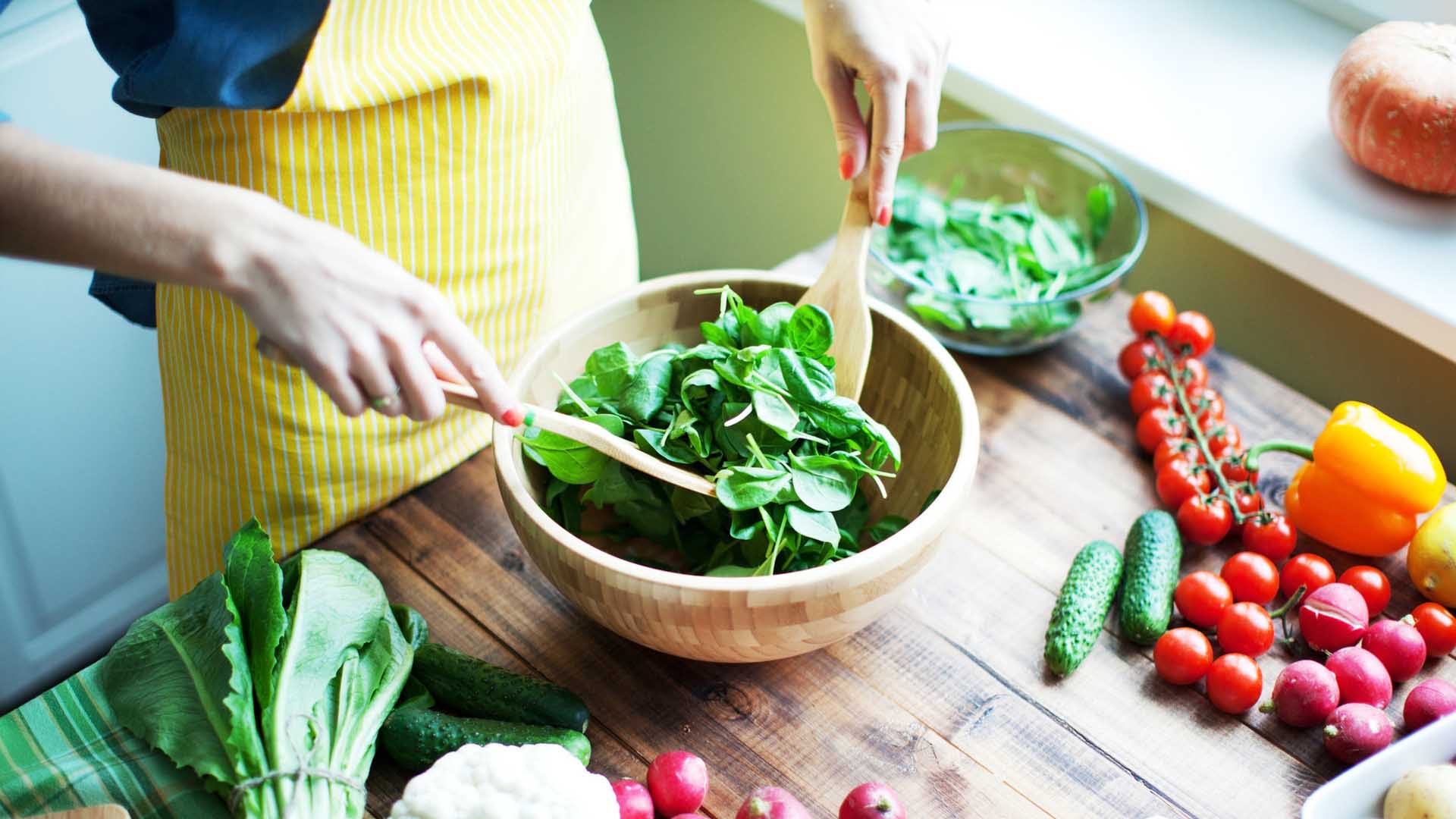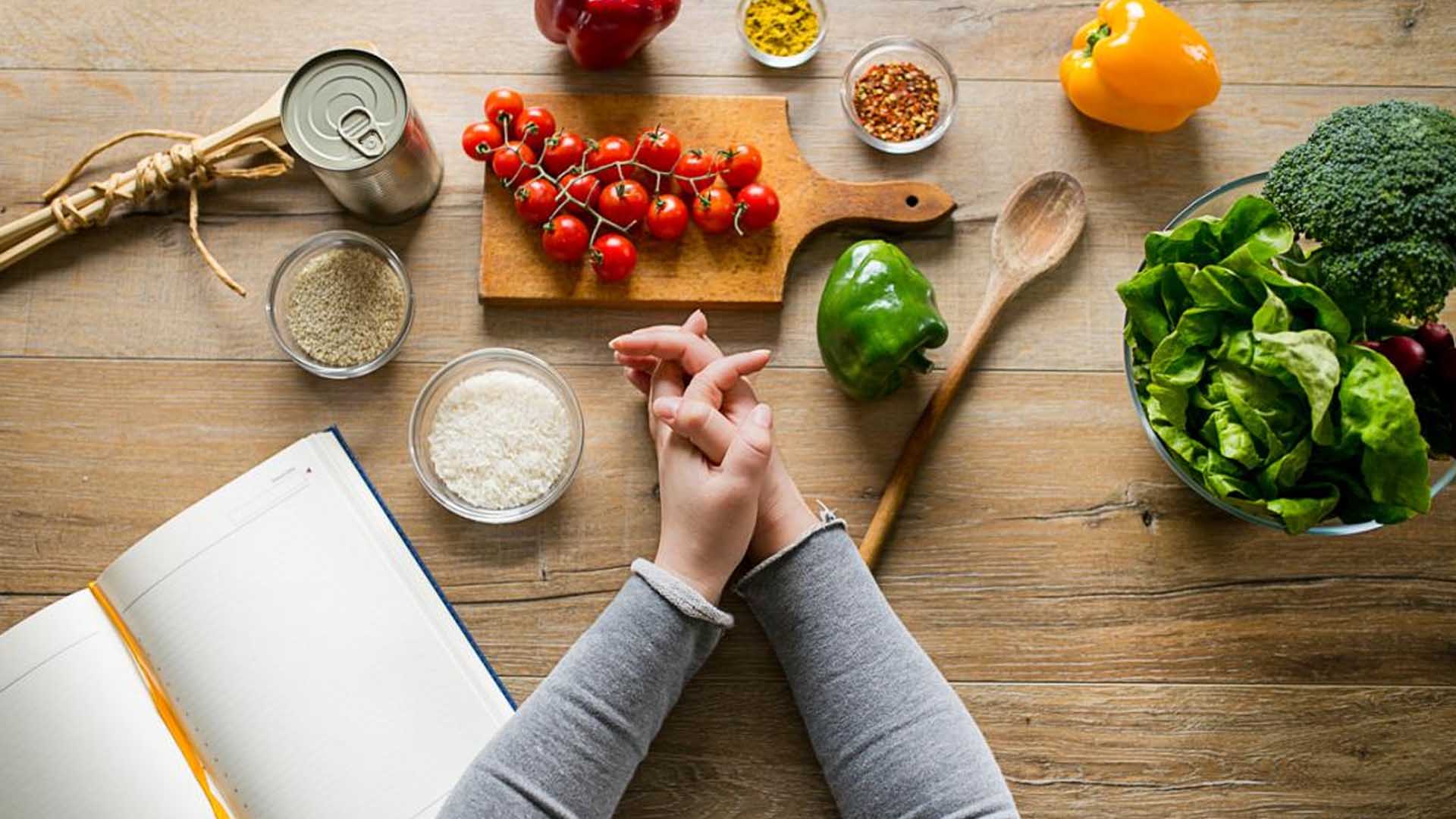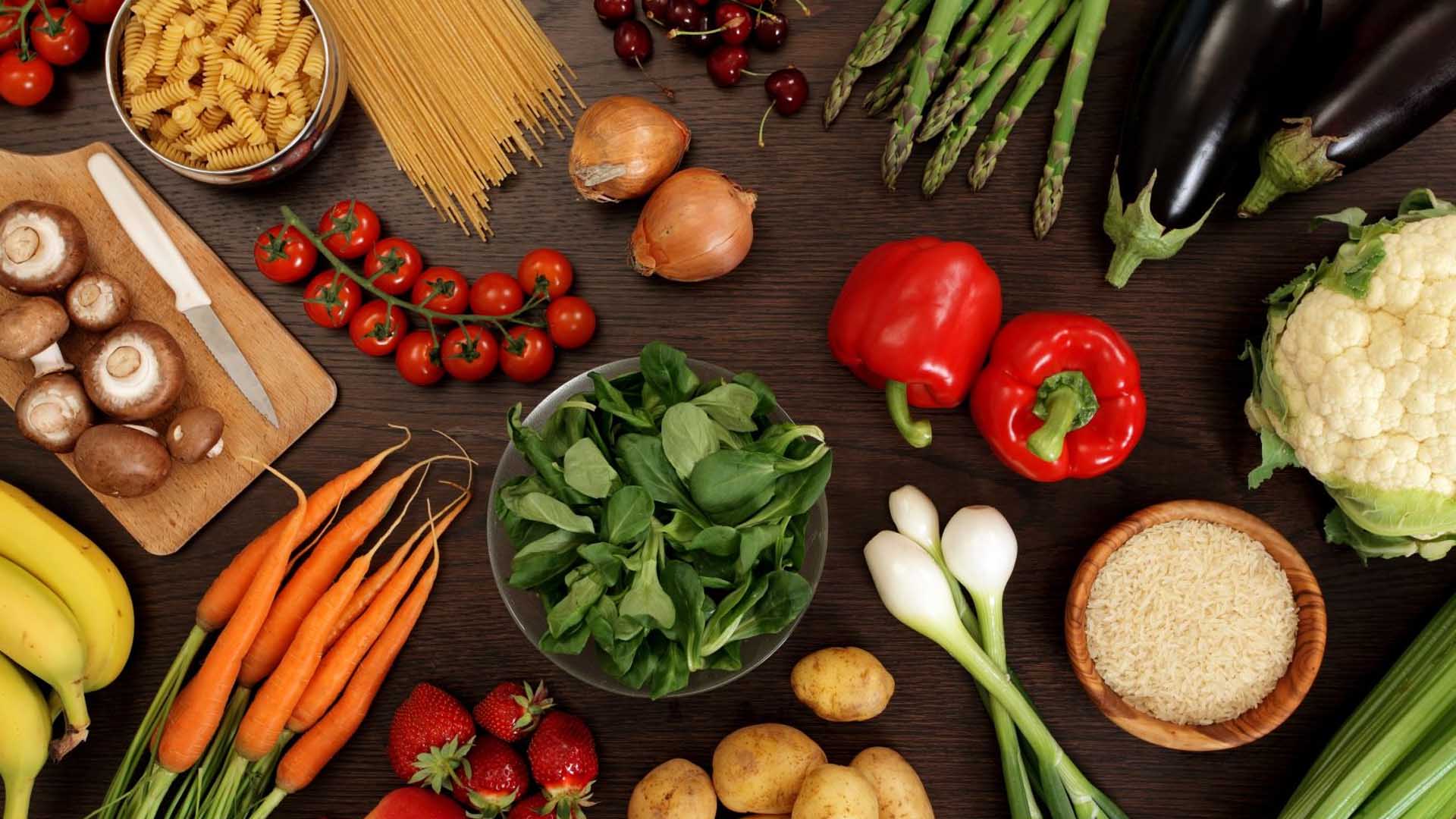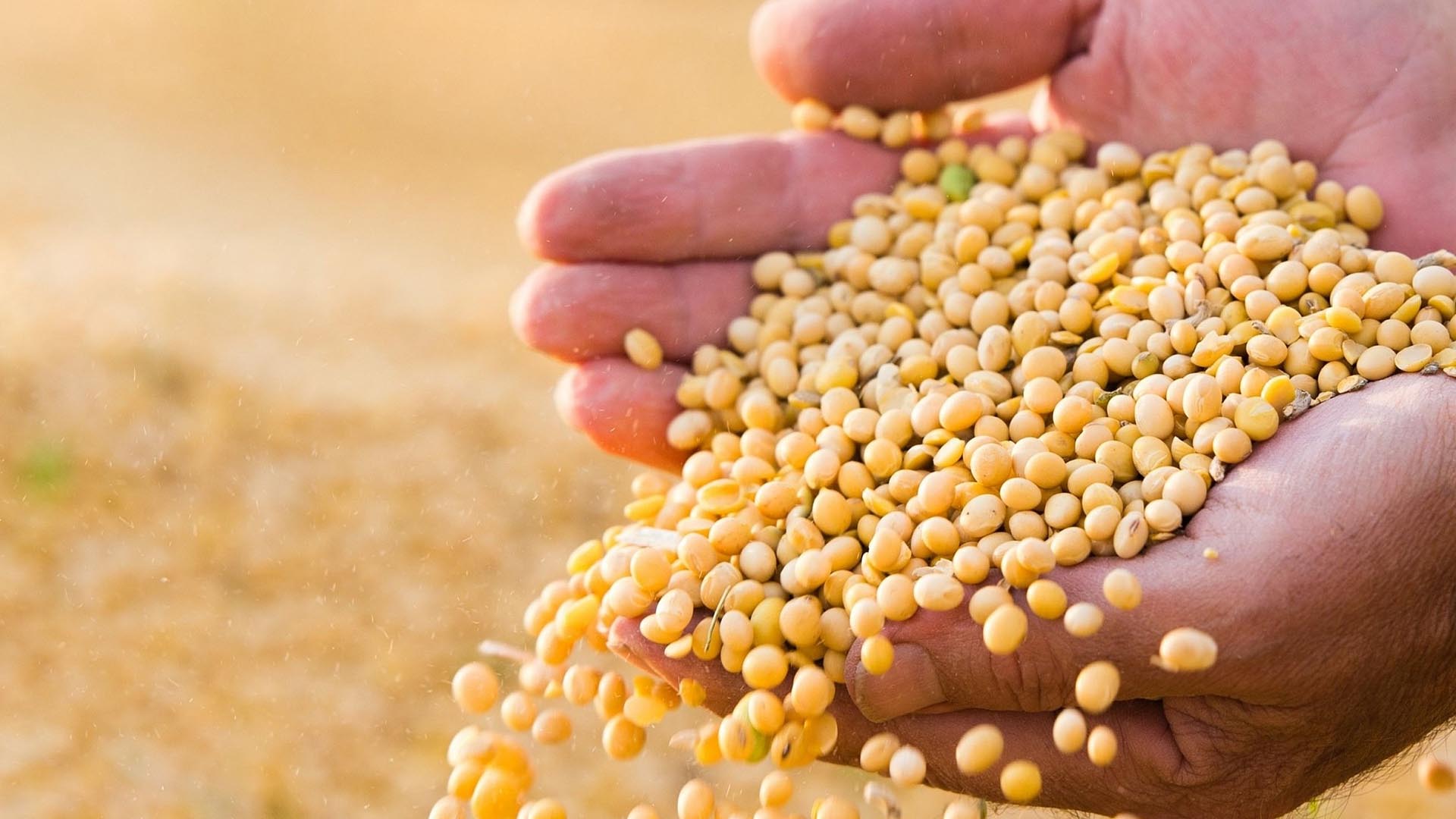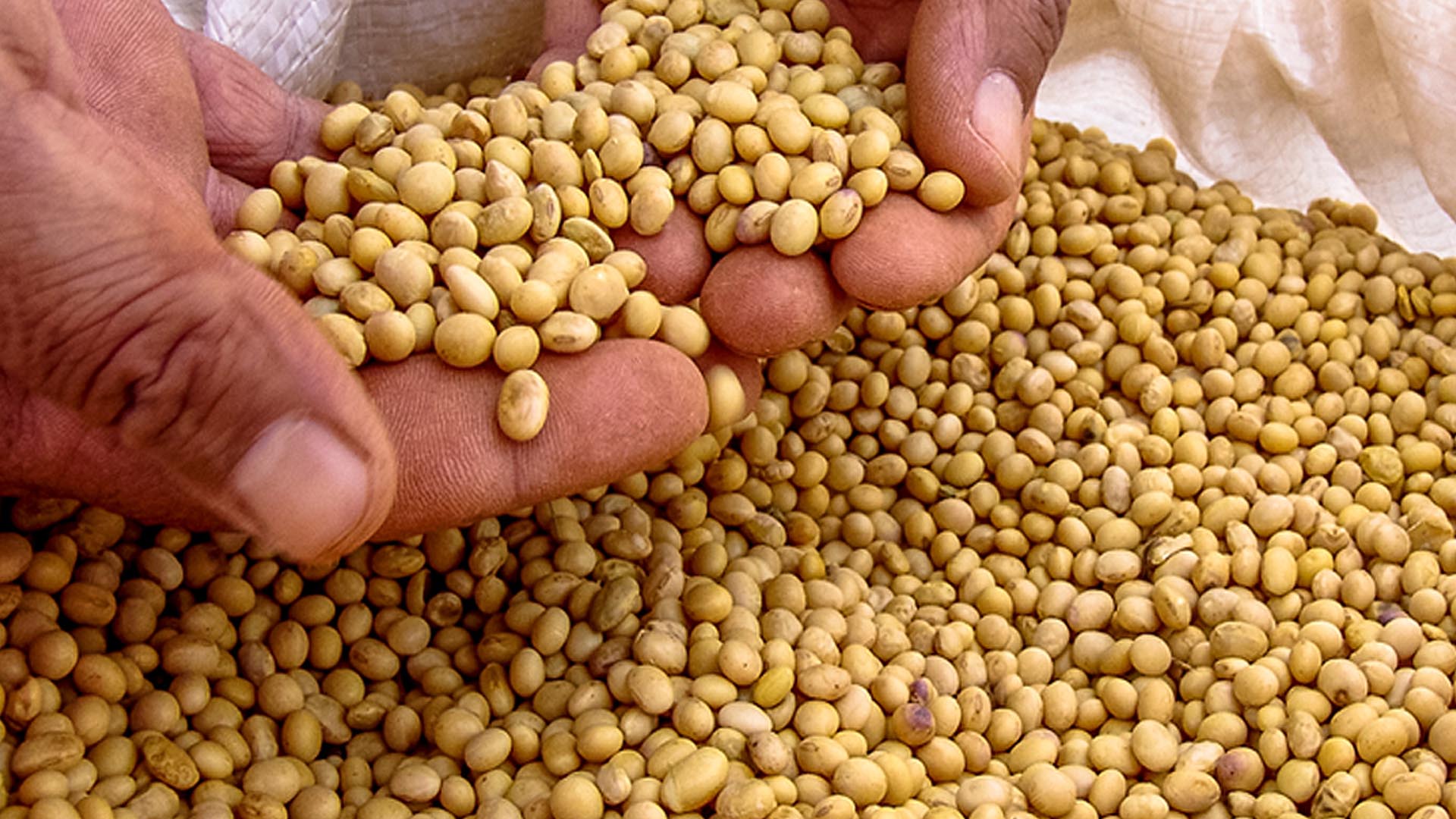This article was published by John Robbins on December 19, 2012.
In recent years, I’ve received quite a number of requests from people asking for my views on soy products. Many of these inquiries have mentioned a stridently anti-soy article written by Sally Fallon and Mary G. Enig, titled “Tragedy and Hype,” that has been widely circulated. This article presents a systematic series of accusations against soy consumption, and has formed the basis for many similar articles. Large numbers of people, as a result, are now seriously questioning the safety of soy. The litany of dangers with soy products, according to the article by Fallon and Enig, is nearly endless. Tofu, they say, shrinks brains and causes Alzheimer’s. Soy products promote rather than prevent cancer. Soy contains “anti-nutrients” and is full of toxins. The pro-soy publicity of the past few years is nothing but “propaganda.” Soy formula, they say, amounts to “birth control pills for babies.” “Soy is not hemlock,” they conclude, “soy is more insidious than hemlock.”
Fallon and Enig say the soy industry knows soy is poisonous, and “lie(s) to the public to sell more soy.” They say that soy is “the next asbestos.” They predict that there will be huge lawsuits with “thousands and thousands of legal briefs.” They warn that those who will be held legally responsible for deliberately manipulating the public to make money “include merchants, manufacturers, scientists, publicists, bureaucrats, former bond financiers, food writers, vitamin companies, and retail stores.” Given the rapidly expanding role that soy in its many forms has come to play in the Western diet, these accusations are extremely serious. If they are to be believed, the widespread trust that many people have come to have in soy is not only misplaced, but disastrous. Soy foods have come to play such a significant role in the diets of many health conscious people, and the allegations that have been made against soy are so many and so grave, that I think the topic warrants a careful, detailed and meticulous look. What follows is my attempt to provide an objective appraisal of both the benefits and the dangers of soy.
Are Soy Foods a Blessing or a Curse?
It’s not that long ago those soybeans were considered by most Americans to be “hippie food.” But then medical research began accumulating, affirming that soy consumption reduced heart disease and cancer risk, that it lengthened lives and enhanced their quality, and that it provided an almost ideal protein to substitute for animal proteins that almost inevitably come packaged with cholesterol and unhealthy forms of saturated fat. The mainstream culture began taking note. In a 1999 article titled “The Joy of Soy,” Time Magazine announced that consuming a mere 1.5 ounces of soy a day can significantly lower both total and LDL (“bad”) cholesterol levels. The evidence was becoming so convincing that even the ardently pro-pharmaceutical FDA wound up affirming that soybeans are a food that can prevent and even cure disease.
As the evidence of soy’s health benefits kept accumulating, sales and consumption skyrocketed. Books like The Simple Soybean and Your Health, Tofu Cookery, and The Book of Tofu helped spread the word. Annual soymilk sales, which amounted to only a few million dollars in the early 1980s, have now soared to more than a billion dollars. And it’s not just soy milk, it’s all soy foods. From 1996 to 2011, annual soy food sales in the U.S. literally quintupled — increasing from $1 billion to $5 billion.
But, according to the article by Sally Fallon and Mary Enig, this is all a tragic mistake, because soy is far indeed from living up to the many health claims that its proponents have made for it. Quite to the contrary, Fallon and Enig say, “the soybean contains large quantities of natural toxins or ‘anti-nutrients,’ (including) potent enzyme inhibitors that block the action of trypsin and other enzymes needed for protein digestion… They can produce serious distress, reduced protein digestion and chronic deficiencies in amino acid uptake.”
These are serious allegations, because soy is often consumed precisely for its considerable protein levels. In my view, there is a kernel of truth behind these charges, though one that Fallon and Enig greatly overstate. It is true that the protein in cooked soybeans is slightly less digestible than that found in most animal foods.
However, when soybeans are made into soymilk, tofu, tempeh, and the other common forms of soyfoods, their protein digestibility is enhanced and becomes similar to animal foods. Any negative impact on protein digestibility due to the presence of the enzyme inhibitors found in soybeans is rendered nearly irrelevant in such foods. And even simple soybeans, with their reduced digestibility, are so high in protein and in all the essential amino acids that they could still easily serve as the sole source of protein in a person’s diet if that was necessary for some reason.
“Soybeans also contain haemagglutinin,” continue Fallon and Enig, “a clot-promoting substance that causes red blood cells to clump together. Trypsin inhibitors and haemagglutinin are growth inhibitors… Soy also contains goitrogens — substances that depress thyroid function.” It is true that soybeans contain these substances. How then do we explain that moderate amounts of soyfoods have been eaten happily by entire civilizations for thousands of years? Fallon and Enig’s case is built on animal studies in which test animals fed extremely large and unnatural amounts of soy containing these substances “failed to grow normally,” and developed “pathological conditions of the pancreas, including cancer.” But the fact is there is little to no evidence that the quantities of these substances found in a typical diet including soybeans would represent a health danger to humans.
Animal Studies
Animal studies are at the very foundation of many of the accusations against soy. But humans are different from any other animal, so foods that affect them in one way may well affect us differently. Protease inhibitors are substances that retard the action of digestive enzymes that cause the breakdown of protein. Fallon and Enig refer to studies that show that protease inhibitors isolated from soybeans can cause cancer in some animal species, but there is no evidence even suggesting that they have the same effect in humans. In fact, protease inhibitors found in soybeans have been shown to reduce the incidence of colon, prostate and breast cancer in humans.
Fallon and Enig make much of a 1985 study which showed that soy increases the risk of pancreatic cancer in rats. But researchers with the National Cancer Institute point out that the pancreas of a few species of animals, notably rats and chicks, are extraordinarily sensitive to dietary protease inhibitors such as those found in soy. This sensitivity has not been found in other species such as hamsters, mice, dogs, pigs, and monkeys, they say, and is “not expected to occur in humans.” In fact, while rats fed nothing but soy run higher risks of pancreatic cancer, human populations consuming high levels of soy have decreased rates of pancreatic cancer.
Species, even those that seem quite closely related, often function quite differently at a molecular level. It is true, as Fallon and Enig point out, that baby rats fail to thrive on soy. But they also fail to thrive on human breast milk. This is because rats and humans have vastly different nutritional requirements. Human milk, for example, is 5% protein; rats’ milk is 45% protein.
The difference in nutritional requirements and responses for different species can be enormous. Foods that are highly nutritious for one species are often inedible or even poisonous to other species. Soybeans are high in isoflavones — phytoestrogens, or plant substances that behave like weak forms of the hormone estrogen. Fallon and Enig select a few animal studies that appear to show a correlation between soy isoflavone consumption and cancer risk. But soy consumption has been repeatedly found to lower breast cancer risk in humans, precisely because of the isoflavones in soy.
Why the difference? K. O. Kline, M.D., of the Department of Clinical Science at DuPont Hospital for Children in Delaware comments in a 1998 article in Nutrition Reviews. “It is clear from the literature,” writes Kline, “that different species and different tissues are affected by (soy) isoflavones in markedly different ways.” Fallon and Enig, however, do not agree. They denounce Kline’s comments, fuming that “this is scientific double talk.” Another interpretation would be that Kline is simply acknowledging the reality that there are physiological differences between species that must be taken into account.
Remember thalidomide, the drug that caused horrendous birth defects in children born to mothers who took the drug during their pregnancies? Thalidomide had been widely tested on animals, where it appeared to be totally safe. Similarly, the combination of fenfluramine and dexfenfluramine, recently touted to be the answer to dieters’ prayers, was extensively tested on animals and found to be very safe. Unfortunately it caused heart value abnormalities in humans. When the arthritis drug Opren was tested on monkeys, no problems were found, but it killed 61 people before it was withdrawn. Cylert was fine for animals, but when it was given to hyperactive children it caused liver failure.
Soy and Cancer: What is the Connection?
The important question, then, is what is the relationship between soy consumption and cancer in humans? Despite the allegations of those wishing to build a case against soy, the evidence strongly suggests not only that soy does not promote cancer, but that it reduces cancer risk. For example, the elders of Okinawa have repeatedly been shown to be healthiest and longest-lived people in the world. This was demonstrated conclusively in the renowned Okinawa Centenarian Study, a 25-year study sponsored by the Japanese Ministry of Health. The researchers conducting the study analyzed the diet and health profiles of Okinawan elders, and compared them to other elder populations throughout the world. They concluded that high soy consumption is one of the main reasons that Okinawans are at extremely low risk for hormone-dependent cancers, including cancers of the breast, prostate, ovaries and colon. Compared to North Americans, they have a staggering 80% less breast cancer and prostate cancer, and less than half the ovarian cancer and colon cancer. This enormously reduced cancer risk arises in part, the study’s authors say, from the Okinawans large consumption of isoflavones from soy. This is an important finding. The lowest cancer rates in the world are found in the Okinawans who consume the most soy.
Other studies have confirmed the link between soy consumption and reduced cancer risk. The Japan Public Health Center Study found the lowest breast cancer rates in those prefectures where women ate the most soy products. A recent study published in the British medical journal Lancet showed that women who ate the most flavonoids (mostly isoflavones from soy products) had a substantially lower risk of breast cancer than those who had lower flavonoid intake. Perhaps most tellingly, a huge study published in the Journal of the National Cancer Institute in 2003 found that women with a high intake of soy reduced their risk of breast cancer by 54% compared to women with a low intake of soy. The anti-soy campaigners repeatedly say that soyfoods raise the risk of cancer. But such charges are incompatible with the findings of the prestigious Health Professionals Follow-up Study, which found a 70% reduction in prostate cancer for men who consume soymilk daily.
Kaayla Daniel is a protégé of Fallon and Enig and the author of a prominent anti-soy book, titled The Whole Soy Story: The Dark Side of America’s Favorite Health Food. The book is edited by Fallon, who owns the small book company that publishes it. In her book, Daniel says that “soy can almost certainly be blamed for at least some of the increase in thyroid cancers in that soy isoflavones [the type of phytoestrogen found in soy] induce… thyroid tumors.” But that’s not what the Cancer Prevention Institute of California found when it undertook the Bay Area Thyroid Cancer Study. Quite the contrary. They found that those who consumed the most phytoestrogens from soy foods, whole grains, nuts and seeds, had a markedly lower risk of thyroid cancer. Women who consumed the most soy had about half the risk of thyroid cancer compared to those who consumed the least.
It is true that if you eat too much soy and your diet is deficient in iodine, your thyroid gland may become swollen and underactive, you may develop symptoms of hypothyroidism (such as lethargy and depression), and your risk of thyroid cancer could increase. But the answer isn’t to avoid soy. It’s to make sure you consume enough iodine. Soy does not cause thyroid problems in people who consume adequate amounts of iodine. In the U.S., iodine deficiency is very rare, because common table salt is fortified with iodine, and a mere quarter teaspoon of iodized salt provides the needed daily dose. Those not consuming iodized salt, however, should make sure they are obtaining reliable sources of the mineral. The iodine content of plant foods depends greatly on the amounts found in the soil in which they are grown. Sea vegetables and seaweeds are excellent and reliable sources of the mineral and most multi-vitamin supplements contain iodine.
Meanwhile, Kaayla Daniel’s book has misled many health conscious people into believing that soy increases the risk not only for thyroid problems and thyroid cancer, but for many other forms of cancer. As a result, increasing numbers of people have become frightened of eating soy. Health researcher Syd Baumel was one of the first to challenge the promotion of soy as a miracle food and to question the idea that the more soy you eat the better. But when he looked into Daniel’s claims, he was anything but impressed. He says Daniel’s book “consistently deceives and manipulates the reader in order to build a false case… Pretty well anywhere you dip into this book, the waters are muddied with half-truths, misrepresentations, errors, lies and other tricks of false persuasion.” Baumel gives this example: “Daniel cites a five-year clinical trial in which six out of 179 post-menopausal women taking a very high dosage soy isoflavone supplement developed endometrial hyperplasia. None of the 197 women who took a placebo did. ‘Endometrial proliferation is a precursor of cancer,’ Daniel warns, implying the women can look forward to a date with the oncologist. She doesn’t mention that all of them developed the relatively benign, non-atypical form of endometrial hyperplasia. Research suggests this condition carries a 2 percent risk of progressing to endometrial cancer – little different from the 1 to 2 percent risk for women in general.”
In 1997, the American Institute for Cancer Research, in collaboration with its international affiliate, the World Cancer Research Fund, issued a major international report, Food, Nutrition and the Prevention of Cancer: A Global Perspective. This report analyzed more than 4,500 research studies, and its production involved the participation of more than 120 contributors and peer reviewers, including participants from the World Health Organization, the Food and Agriculture Organization of the United Nations, the International Agency on Research in Cancer, and the U.S. National Cancer Institute. In 2000, Riva Bitrum, the President of Research for the American Institute for Cancer Research, said that “Studies showing consistently that just one serving a day of soyfoods contributes to a reduction in cancer risk are encouraging.”
Of course, any foods with such potent biological properties — even healthful ones — are bound to have some unwanted side effects in some people under some circumstances. Although soy consumption on the whole reduces cancer incidence, there are questions about its effect on women who have estrogen-positive (ER+) breast tumors. These tumors are stimulated by estrogen. Might they therefore be stimulated by the weak estrogenic activity of the isoflavones found in soy? The jury is still out. There is some evidence this may be the case, though there is also evidence that soy consumption favorably alters the metabolism of estrogen so that it is less likely to stimulate tumor growth. For healthy women, according to the American Institute for Cancer Research, “even two or three servings a day of soyfoods should be fine as one part of a mostly plant-based diet.”
Soy supplements are a different story. Soy pills and powders can contain amounts of isoflavones (usually daidzein and genistein) far in excess of the amounts possible to get through diet. Very little research has been done on the effects of such mega-doses. Although there is no firm evidence to demonstrate that ingestion of isoflavones has adverse effects on human beings, there is also no clear evidence that large doses are safe. Some manufacturers of soy protein isolates and supplements recommend that people consume 100 grams of soy protein a day (the equivalent of 7 or 8 soyburgers). I believe it’s probably safer, until more is learned, to avoid concentrated soy supplements entirely.
Does Soy Inhibit Mineral Absorption?
Fallon and Enig are adamant in their beef with soy, however, and their indictment of the bean continues. They fault soy for its phytic acid content. “Soybeans are high in phytic acid,” they say, “a substance that can block the uptake of essential minerals — calcium, magnesium, copper, iron and especially zinc in the intestinal tract… Vegetarians who consume tofu as a substitute for meat and dairy products risk severe mineral deficiencies.” It is true that soybeans are high in phytates, as are many plant foods such as other beans, grains, nuts and seeds, and it is true that phytates can block the uptake of essential minerals, and particularly zinc. This would be a problem if a person consumed enormous amounts of soy. But the phytic acid levels found in a plant-strong diet including as much as three servings of soy a day are not high enough to cause mineral absorption problems for most people.
Furthermore, when soy products are fermented — as they are in tempeh, miso, and many other soyfoods — phytate levels are reduced to about a third their initial level. Other methods of soy preparation such as soaking, roasting and sprouting also significantly reduce phytate content. While phytates can compromise mineral absorption to some degree, there is absolutely no reliable evidence that vegetarians who eat soyfoods “risk severe mineral deficiencies.” Even the National Cattlemen’s Beef Association has acknowledged the nutritional adequacy of meatless diets. In an official statement, these representatives of the beef industry declared, “Well planned vegetarian diets can meet dietary recommendations for essential nutrients.”
Let’s look, one by one, at the minerals Fallon and Enig claim to be lacking for those who consume tofu rather than meat:
- Zinc: It is wise for vegetarians to include plenty of zinc-rich foods in their diets, but the levels of zinc found in the hair, saliva, and blood of vegetarians are typically in the normal range. Zinc deficiency would be particularly harmful in pregnant women, but studies of pregnant women have consistently found no difference in zinc status between vegetarians and nonvegetarians.
- Iron: Plant-strong diets are much higher in vitamin C, and vitamin C greatly enhances iron absorption, so even without eating red meat (which is high in iron), and even with the reduction in iron absorption from phytates, vegetarians are no more prone to iron deficiency than are nonvegetarians.
- Copper: Vegetarian diets tend to be higher in copper, and vegans, in particular, consume considerably more copper than meat-eaters. Those eating plant-strong diets are typically at little to no risk of developing copper deficiencies. But many studies, including the Chicago Health and Aging Project, have found strong links between excess copper consumption and the incidence of Alzheimer’s disease. The fact that phytates in soy reduce copper absorption may be one of the reasons vegetarians and vegans, despite their higher rates of copper consumption, have lower rates of Alzheimer’s disease. (If you eat a plant-strong diet and take multi-vitamin pills, it’s a good idea to get vitamins that do not contain copper.)
- Magnesium: Although the higher phytate content of soybeans and grains slightly reduces magnesium absorption, vegetarian diets are typically so much higher in this crucial mineral that vegetarians consistently show markedly higher serum magnesium levels than do nonvegetarians.
- Calcium: Calcium from soy is nearly as bioavailable as calcium from cow’s milk. Many studies have found a correlation between the consumption of isoflavones from soyfoods and increased bone health.
Soy Foods and Bone Health
Without providing any supporting evidence, Fallon and Enig go on to say that “soyfoods block calcium and cause vitamin D deficiencies… The reason that Westerners have such high rates of osteoporosis is because they have substituted soy oil for butter, which is a traditional source of vitamin D…needed for calcium absorption.” Vitamin D is indeed needed for calcium absorption, and is crucial to human health in many other ways. But skin exposure to sunlight, not butter consumption, has always been the primary source of vitamin D in humans. In fact, people whose skin is not exposed to direct sunlight have difficulty getting enough vitamin D from their diets without supplementation. A 1999 report in the American Journal of Clinical Nutrition said that blood levels of vitamin D in sunlight-deficient people don’t begin to rise until 4,000 units of dietary vitamin D are consumed. Someone relying on unfortified butter for this amount would have to eat four pounds of butter a day.
Why, then, do Westerners have such high rates of osteoporosis? We have become sedentary, plus we consume a highly processed, high-salt, high-animal protein diet. The calcium-losing effect of animal protein on the human body is not a matter of controversy in scientific circles. Researchers who conducted a recent survey of diet and hip fractures in 33 countries said they found “an absolutely phenomenal correlation” between the percentage of plant foods in people’s diets, and the strength of their bones. The more plant foods people eat (particularly fruits and vegetables), the stronger their bones, and the fewer fractures they experience. The more animal foods people eat, on the other hand, the weaker their bones and the more fractures they experience.
Similarly, in January 2001, the American Journal of Clinical Nutrition published a study that reported a dramatic correlation between the ratio of animal to vegetable protein in the diets of elderly women and their rate of bone loss. In this seven-year study funded by the National Institutes of Health, more than 1,000 women, ages 65 to 80, were grouped into three categories: those with a high ratio of animal to vegetable protein, a middle range, and a low range. The women in the high ratio category had three times the rate of bone loss as the women in the low group, and nearly four times the rate of hip fractures.
Might this have been due to other factors than the ratio of animal to vegetable protein? According to the study’s lead author, Deborah Sellmeyer, M.D., Director of the Bone Density Clinic at the University of California, San Francisco, Medical Center, researchers found this to be true even after adjusting for age, weight, estrogen use, tobacco use, exercise, calcium intake, and total protein intake. “We adjusted for all the things that could have had an impact on the relationship of high animal protein intake to bone loss and hip fractures,” Sellmeyer said. “But we found the relationship was still there.”
Does Soy Protect Against Heart Disease?
If the articles written and spawned by Fallon and Enig were to be believed, just about everything we’ve been taught to believe about soy’s benefits is completely backwards. What about soy’s vaunted reputation (and FDA approval) for bringing down cholesterol levels? “For most of us,” say Fallon and Enig, “giving up steak and eating veggieburgers instead will not bring down blood cholesterol levels.” Someone once said that people are entitled to their own opinions, but not to their own facts. A review of 38 studies, published in the New England Journal of Medicine in 1995, found that soy consumption reduced cholesterol levels in 89% of the studies.
If there is a grain of truth in Fallon and Enig’s statement, it is that while soy consumption tends to bring down total cholesterol levels most in people whose cholesterol levels are high, it may not do so in those with healthier levels. But even people with normal levels still benefit from eating more soy, according to dozens of studies, because it improves the ratio between HDL (good) and LDL (bad) cholesterol. This ratio is now recognized by the American Heart Association to be an even more important factor than total cholesterol levels in heart disease risk.
In 2000, the Nutrition Committee of the American Heart Association published a major statement in the peer-reviewed journal Circulation, officially recommending the inclusion of 25 grams or more of soy protein, with its associated phytochemicals intact (i.e., not in the form of an isolated soy protein supplement), in the daily diet as a means of promoting heart health. This recommendation is consistent with the FDA’s ruling allowing soy protein products to carry the health claim: “25 grams/day of soy protein, as part of a diet low in saturated fat and cholesterol, may reduce the risk of heart disease.”
What do the soy pooh pooh-ers say to this? They say that lowered cholesterol levels, even those lowered by diet, are dangerous: “The truth is that cholesterol is your best friend,” they write. “When cholesterol levels in the blood are high, it’s because the body needs cholesterol… There is no greater risk of heart disease at cholesterol levels of 300 than at 180.” That’s quite a point of view, ignoring as it does just about everything that has been learned about heart disease and cholesterol in the past 30 years of medical science. The Lipid Research Clinics Coronary Primary Prevention Trial, for example, is considered the broadest and most expensive research project in medical history. Sponsored by the federal government, it took over ten years of systematic research, and cost over $150,000,000. George Lundberg, M.D., the editor of the Journal of the American Medical Association, where the gargantuan study was first published, said that the study proved that even small changes in our blood cholesterol levels produce dramatic changes in heart disease rates. Charles Glueck, M.D., director of the University of Cincinnati Lipid Research Center, one of the twelve major centers participating in the project, noted: “ For every 1% reduction in total blood cholesterol level, there is a 2% reduction of heart disease risk.”
Does Soy Cause Birth Defects?
One of the most alarming allegations that Fallon and Enig and other anti-soy campaigners make is that, due to the phytoestrogens in soyfoods, vegetarian diets promote birth defects. They repeatedly refer to a study published in the British Journal of Urology that found baby boys born to vegetarian mothers were five times more likely to suffer from hypospadias, a malformation of the penis correctable with surgery. I find this disturbing, but I know of no other study that links vegetarian diets with a higher rate of any birth defect, including hypospadias, and there are a number that show the opposite — lower rates of a variety of birth defects in babies born to vegetarian mothers. If the findings of this study were valid, however, it would be extremely important. We certainly need more studies to determine what is going on, but after reading the actual study I am not nearly as concerned as I was upon reading Fallon and Enig’s description, because what they neglect to mention is the significant fact that the total number of baby boys in the study born with this condition to vegetarian mothers was only seven.
It’s hard to know just what to make of this small and isolated study. To my eyes, it highlights how much we have yet to learn about the impact of the phytoestrogens contained in soy. Given our current state of knowledge, I think that pregnant women should largely avoid soy-based supplements. But there is no cause to conclude that vegetarian diets, or soyfoods, are suspect in pregnancy. Vegetarian diets have consistently shown profound benefits for pregnancy and lactation, including much lower levels of the toxic chemicals that typically concentrate higher on the food chain in meat, fish and dairy products. A report in the New England Journal of Medicine on the levels of contamination in human breastmilk found that vegan mothers had dramatically lower levels of toxic chemicals in their milk compared to mothers in the general population. The highest level seen among these vegan mothers was actually lower than the lowest level seen in nonvegetarian mothers. In fact, the levels of contamination found in the milk of the vegetarian mothers was only 1%-2% as great as the level found in the milk of nonvegetarians.
Infant Soy Formulas: Birth Control Pills for Babies?
Another of the disturbing charges made by the soy bashers is the allegation that “an infant exclusively fed soy formula receives the estrogenic equivalent (based on body weight) of at least five birth control pills per day.” Soy formula, say Fallon and Enig, amounts to “birth control pills for babies.” In my view, there could be some basis here for concern. For an adult to regularly eat soy characteristically produces a reduced risk of developing breast or prostate cancer. But the same phytoestrogens that produce this effect in adults may produce very different effects in infants. “With adults, half their phytoestrogens are freed into the bloodstream to bind to estrogen receptors, which helps to fight breast cancer,” explains Patricia Bertron, dietitian director of the Physicians Committee for Responsible Medicine. “But with infants, less than five percent are available to bind to receptors.” There is a possibility that this could pose a risk to the sexual development of infants and children. Because the milk source makes up nearly the entire diet of infants, babies fed soy formulas may be at increased risk of harm.
These theoretical risks are quite disturbing, but they appear at this point to be merely theoretical, because we have yet to see any substantive evidence of this harm in people. There have been no reports of hormonal abnormalities in people who were fed soy formula as infants — and this includes millions of people in the past 30 years. In fact a major study published in the August, 2001, Journal of the American Medical Association found that infants fed soy formula grow to be just as healthy as those raised on cow’s milk formulas. If the phytoestrogens in soy were affecting the reproductive system of infants fed soy formulas, then soy-fed babies would develop reproductive health problems as adults. The study evaluated 811 men and women between the ages of 20 and 34 who had participated in soy and cow’s milk studies as infants. No significant differences were found between the groups in more than 30 health areas. The only exception was that women who had been soy-fed reported slightly longer menstrual periods (one-third of a day) than women raised on cow’s milk formulas.
The debate as to which is better, formulas based on soy or cow’s milk, is unresolved. Each seems to have its own dangers. What is indisputable is that babies reared on breastmilk have phenomenal health advantages over babies reared on any type of formula.
Compared to babies who are fed soy or cow’s milk based formulas, babies who are beast-fed for at least six months have:
- Three times fewer ear infections
- Five times fewer urinary tract infections
- Five times fewer serious illnesses of all kinds
- Seven times fewer allergies, and are
- Fourteen times less likely to be hospitalized.
The health advantages of breastfeeding are almost impossible to exaggerate. Babies who are breast-fed:
- Spit up less often
- Have less diarrhea
- Have less constipation
- Are 30 times less likely to die from Sudden Infant Death Syndrome
- Are only half as likely to develop diabetes
- Half an average I.Q. seven points higher
The health benefits of breastfeeding are lifelong. As adults, people who were breast-fed:
- Have less asthma
- Have fewer allergies
- Have less diabetes
- Have fewer skin problems including dermatitis
- Have lower risks of heart attacks and stroke
- Have lower cholesterol levels
- Have less ulcerative colitis (ulcers in the large intestines)
- Have less Crohn’s disease, and
- Have protection from certain chronic liver diseases.
The evidence that breast is best is utterly overwhelming. Yet the anti-soy crusader Sally Fallon would evidently prefer that an infant be fed a cow’s milk formula rather than breast milk, if the mother is a vegetarian. She writes that “breast milk is best if the mother has consumed a …diet…rich in animal proteins and fat throughout her pregnancy and continues to do so while nursing her child.”
Why would someone make a statement like that? Where are these soy antagonists coming from? What are they trying to prove?
Fallon and Enig, like Kaayla Daniel and many of the other headliners in the anti-soy campaign, are proponents of the philosophy that in order to be healthy people must eat large amounts of saturated fat from animal products. They advocate feeding pureed meat to infants. And they deplore the fact that soy products are increasingly replacing animal products in the American diet.
Cow’s Milk vs. Soy Milk
Some anti-soy crusaders, most notably the U.S. dairy industry, clearly have a financial agenda. In recent years, the dairy industry has been waging war particularly against soymilk. They have attempted to keep soy beverages from being included in the milk group in the Dietary Guidelines for Americans. They have sued the manufacturers of soy beverages for using the word milk, claiming that the dairy industry alone has a right to use the term. And they have tried to keep soy beverages from being sold alongside cow’s milk in the grocery aisles. A spokesperson for the National Milk Producers Federation made it clear why the industry was upset. “It is,” he said, “a clear attempt to compete with dairy products.”
Heaven forbid.
Meanwhile, the dairy industry has been spending hundreds of millions of dollars on ads and other forms of promotion trying to convince the public that cow’s milk is vastly preferable to soymilk. For example, the Dairy Bureau tell us that…. “Unfortified soy beverages contain only half of the phosphorus, 40 percent of the riboflavin, 10 percent of the vitamin A, (and) 3 percent of the calcium . . . found in a serving of cow’s milk.”
Let’s look at the Dairy Bureau’s claims carefully for a moment.
- Only half the phosphorus? That sounds bad. But we actually get plenty of phosphorus in our diets, and possibly even too much. Providing only half the phosphorus of cow’s milk is an advantage, says dietician Brenda Davis, not a disadvantage.
- Only 40 percent of the riboflavin? It’s true that unfortified soymilks contain only about half as much of this nutrient, also known as Vitamin B2, as cow’s milk. But riboflavin is plentiful in nutritional yeast and green leafy vegetables, and is found in nuts, seeds, whole grains, and legumes, so getting enough riboflavin isn’t a problem for people who eat a variety of healthy foods. In fact, vegans (who consume no dairy products) consume as much, or nearly as much, of this vitamin as lacto-ovo vegetarians and non-vegetarians. A mere teaspoon of Red Star Nutritional Yeast powder contains as much riboflavin (1.6 mg) as an entire quart of cow’s milk.
- Only 10 percent of the vitamin A? Vitamin A is plentiful in plant-based diets. We don’t need milk to get sufficient amounts of this nutrient. In fact, vitamin A deficiency is quite rare among North Americans and Europeans who eat plant-based diets. Furthermore, vitamin A is high in cow’s milk only because it’s added to it, and there is no reason it could not be added to non-dairy beverages if there was some advantage to doing so.
- Only 3 percent of the calcium provided by cow’s milk? Where does the dairy industry come up with this stuff? All of the most popular soy beverages sold in the United States provide vastly more calcium than the 3 percent claimed by the Dairy Bureau. Most enriched versions provide 100 percent as much. Even those soy beverages that have not been enriched provide two to nine times as much calcium as claimed by the Dairy Bureau.
Meanwhile, there are a few more things the dairy industry isn’t telling you about the nutritional comparison between cow’s milk and soymilk that you might want to keep in mind. For example:
- Cow’s milk provides more than nine times as much saturated fat as soy beverages, so is far more likely to contribute to heart disease.
- Soy beverages provide more than 10 times as much essential fatty acids as cow’s milk, and so provide a far healthier quality of fat.
- Soy beverages are cholesterol-free, while cow’s milk contains 34 mg of cholesterol per cup.
- Soy beverages lower both total and LDL (“bad”) cholesterol levels, while cow’s milk raises both total and LDL cholesterol levels.
- Soy beverages contain numerous protective phytochemicals that may protect against chronic diseases such as heart disease and osteoporosis. Cow’s milk contains no phytochemicals.
Frankensoy?
Still, there are legitimate questions about soy. To my mind by far the most disturbing stems from the fact that 90 percent of the U.S. soybean crop today is genetically engineered. These are beans that have been genetically altered to enable the growing plants to withstand being sprayed with Monsanto’s Roundup weedkiller. Because so much Roundup is used on these crops, the residue levels in the harvested crops greatly exceed what until very recently was the allowable legal limit. For the technology to be commercially viable, the FDA had to triple the residues of Roundup’s active ingredients that can remain on the crop. Many scientists have protested that permitting increased residues to enable a company’s success reflects an attitude in which corporate interests are given higher priority than public safety, but the increased levels have remained in force.
While Roundup has been shown to cause reproductive disorders and birth defects in a large number of animal studies, its impact on humans is far less understood. But a laboratory study done in France in 2005 found that Roundup caused the death of human placental cells. And a 2009 study found that Roundup caused total cell death in human umbilical, embryonic and placental cells within 24 hours. It’s hard to avoid the suspicion that eating genetically engineered soybeans could pose serious health risks to people. In 2001, the Los Angeles Times published an exposé revealing that prior to being granted FDA approval, Monsanto’s own research had raised many questions about the safety of their Roundup Ready soybeans. Remarkably, the FDA did not call for more testing before allowing these soybeans to flood the marketplace. Since 90 percent of the soybeans grown in the United States are now Monsanto’s Roundup Ready variety, and because soy is contained in such a wide array of processed foods, tens of millions of people are unknowingly eating these inadequately researched foods daily. It’s a mass experiment, except that there is no control group, data is not being systematically collected, and virtually the entire human population are the guinea pigs.
According to Monsanto’s own tests, Roundup Ready soybeans contain 29 percent less of the brain nutrient choline, and 27 percent more trypsin inhibitor, the potential allergen that interferes with protein digestion, than normal soybeans. Soy products are often prescribed and consumed for their phytoestrogen content, but according to the company’s tests, the genetically altered soybeans have lower levels of phenylalanine, an essential amino acid that affects levels of phytoestrogens. And levels of lectins, which are most likely the culprit in soy allergies, are nearly double in the transgenic variety.
Compared to regular soybeans, the genetically engineered beans have more of the very things that are problematic, and less of the very things that are beneficial. As well, there is growing evidence that Roundup Ready soybeans disrupt the bacterial milieu of the human gastrointestinal tract. In 2011, one of the nation’s senior scientists, Dr. Don Huber, professor emeritus at Purdue University, informed Secretary of Agriculture Tom Vilsack of a dire new development. A new pathogen had been discovered that may already be doing irreparable harm to both plants and animals. Dr. Huber pleaded with Vilsack to understand that… “It is widespread, very serious, and is in much higher concentrations in Roundup Ready soybeans and corn… This could result in a collapse of US soy and corn export markets and significant disruption of domestic food and feed supplies… For the past 40 years, I have been a scientist in the professional and military agencies that evaluate and prepare for natural and manmade biological threats, including germ warfare and disease outbreaks. Based on this experience, I believe the threat we are facing from this pathogen is unique and of a high risk status. In layman’s terms, it… is an emergency.”
Recognizing that virtually all U.S. beef cattle, dairy cows and pigs are fed Roundup Ready soy, Huber went on to write: “The pathogen may explain the escalating frequency of infertility and spontaneous abortions over the past few years in US cattle, dairy, swine, and horse operations. These include recent reports of infertility rates in dairy heifers of over 20%, and spontaneous abortions in cattle as high as 45%… “It is well-documented that [Roundup’s primary active ingredient] glyphosate promotes soil pathogens and is already implicated with the increase of more than 40 plant diseases; it dismantles plant defenses by chelating vital nutrients; and it reduces the bioavailability of nutrients in feed, which in turn can cause animal disorders… “I have studied plant pathogens for more than 50 years. We are now seeing an unprecedented trend of increasing plant and animal diseases and disorders. This pathogen may be instrumental to understanding and solving this problem. It deserves immediate attention with significant resources to avoid a general collapse of our critical agricultural infrastructure.”
There is a very real danger taking place in the world of soy. While the anti-soy brigade had been saying that soy foods are hazardous to human health, they have been missing the true peril. It’s not the soy that’s the problem, it’s what’s been done to the soy. It is likely that that many if not most of the allergic and other adverse reactions we are seeing today to soybeans are actually reactions to the genetic engineering of our soy crop. If the soy foods you eat are not either organically grown or Non GMO Project certified, you can be pretty sure they are Roundup Ready.
Should We Eat Soy At All?
While soy foods have much to offer, they have certainly been at times heavily over-promoted. As a result, some people have gathered the impression that as long as they eat enough soy, they don’t have to worry about the rest of their diet and lifestyle. This is a dangerous and mistaken belief. Just as taking vitamins can’t atone for a poor diet, consuming soy can’t make up for a diet that’s otherwise poor. Nor can it compensate for a lack of exercise, or other destructive lifestyle habits.
The hype has also made us forget something important. We are eating soy products today at levels never before seen in history. Advances in food technology have made it possible to isolate soy proteins, isoflavones, and other substances found in the bean, and add them to all kinds of foods where they’ve never been before. The number of processed and manufactured foods that contain soy ingredients today is astounding. It can be hard to find foods that don’t contain soy flour, soy oil, lecithin (extracted from soy oil and used as an emulsifier in high-fat products), soy protein isolates and concentrates, textured vegetable protein (TVP), hydrolyzed vegetable protein (usually made from soy) or unidentified vegetable oils. Most of what is labeled “vegetable oil” in the U.S. is actually soy oil. And most of our soy products are now genetically engineered.
This has never before been done in human history. It is an experiment, and should be undertaken, if at all, with great humility, watchfulness, and caution. Instead, under the influence of an almost mystical belief in soy’s virtues, we’ve tended to fall prey to an illusion that has haunted American culture in all kinds of ways — the illusion that if a little is good, then surely more must be better. The anti-soy crusaders, on the other hand, tell us that any amount of soy is too much. They are correct that there are substances in soy that if eaten in too high a concentration can cause problems. The reality, though, is that this is true of almost all foods. In fact, if you made it your policy to eat no food that contained substances which can in large enough concentrations cause damage, there would be literally nothing left for you to eat.
It’s true that soybeans contain substances that in excess can be harmful. But to imply, as some do, that eating soy foods poses a risk to human health is twisting and distorting the evidence. There would be dangers in eating a diet based entirely on soybeans. But, then, the same could be said for broccoli or any other healthy food. This is one of the reasons why varied diets are so important. Diversity protects. For most people under most circumstances, organic or non-GMO soy products are a healthful addition to a balanced diet that includes plenty of vegetables, whole grains, seeds, nuts, fruits, and other legumes. For most people, substituting organic or non-GMO soy foods for some of the animal foods they now eat is one of the healthiest dietary changes they could make.
In my view, the best way to take advantage of soy’s health benefits is to follow the example of the traditional Asian diets. As a population, these are cultures that, when they have eaten their traditional diets, have tended to be healthier and live longer than Americans. The Okinawa Japanese, the longest living people in the world, average 1-2 servings of soy each day. They have traditionally eaten regular but moderate amounts of whole soy foods such as tofu, soymilk, and edamame, as well as the fermented versions, tamari, and miso. These are the soy foods that I prefer to eat — rather than the soy products made with soy protein isolates, soy protein concentrates, hydrolyzed soy protein, partially hydrogenated soy oil, etc. Whole soy foods made from organic or non-GMO soybeans are more natural, and are the soy foods that have nourished entire civilizations for centuries.
For me, the best of the soybean includes foods like:
* Tofu. The soaking process used traditionally to make tofu reduces the trypsin inhibitors and phytates. High in protein, tofu has a bland and neutral taste, and can be added to all kinds of foods. As with all soy products, get organic if you can.
* Tempeh. Extremely high in protein and fiber, and produced in a way that greatly lowers trypsin inhibitors and phytates, tempeh is, from a nutritional perspective, an ideal way to eat soybeans. Most people feel it needs considerable seasoning to taste good.
* Miso. Widely used as a salty condiment and a basis for soups, miso is a potent probiotic, containing many kinds of friendly bacteria that are beneficial to the intestinal tract. The fermentation process used to make miso deactivates the trypsin inhibitors and phytates.
* Tamari (or Shoyu). This is a fermented soy sauce that is very flavorful and salty.
* Soymilk. Often called soy “beverages,” or soy “drinks,” because the dairy industry refuses to allow them to use the word “milk.” Trypsin inhibitors and phytates are low. I prefer the brands made with whole soybeans, and avoid those made with soy protein or soymilk powder. (There are also milks made from rice, almonds and oats that offer their own advantages to cow’s milk.)
* Soy Nuts and Soy Nut Butter. These are particular favorites with many children. Roasting helps reduce phytate levels.
* Edamame. This is a green vegetable soybean harvested while immature, so that the seeds fill 80% to 90% of the pod. Cooked for about 15 minutes in lightly salted boiling water, it’s served as a snack, mixed with vegetables, or added to salads or soups.
* Soy ice creams (non-dairy frozen desserts). These may not technically belong on a list of the healthiest of ways to eat soy, but I must admit I’ve got a weakness for them. I eat the ones made with organic beans and/or organic soymilk, and not those (like Tofutti) made with soy proteins or soy protein isolates. (There are also frozen desserts made from coconut milk and other plant foods that also offer advantages to cow’s milk ice cream.)
My conclusion
Genetically engineered soybeans present us with a historically unprecedented problem. The health benefits of soy beans may be negated by the dangers of GMO soy. Becoming a soy-a-holic and automatically downing anything made from soybeans is not the road to health. But neither is shunning and stigmatizing high quality soy foods. The anti-soy crusade has needlessly frightened many away from a food source that has long been a boon to humankind, a food source that can, if we are respectful of our bodies and of nature, nourish and bless us in countless ways.
John Robbins, December 19, 2012.







